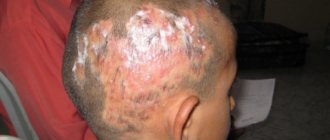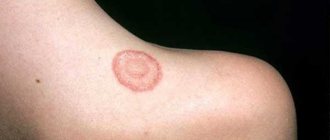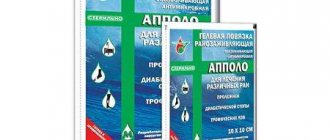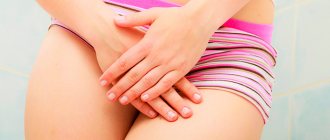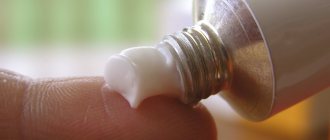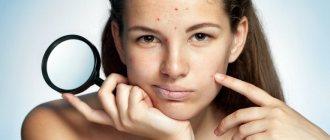- Symptoms
- Kinds
- Thermal burn of lips
- Chemical burn of lips
- Treatment
- What to do if your lips are sunburned?
- What to do if your lips are burned with boiling water?
The surface of the skin of the lips is the delicate and most unprotected part of the human body, so it is often exposed to negative environmental influences. A lip burn can occur as a result of chemical exposure or after exposure to elevated temperatures. In either case, after a traumatic injury, the victim must be provided with timely treatment.
Types of burn
Depending on the factors causing the injury, the victim should receive timely, high-quality treatment. A burn on the lip is divided into the following types: chemical, thermal (boiling water, sunburn of the lips).
Chemical burn of lips
Such injury occurs due to contact with aggressive chemicals, alkalis, and acids. The degree of damage directly depends on the duration of exposure of the active substance to the lip, as well as its concentration.
As a result of chemical damage, tissue necrosis, bleeding of the affected area, scab (dry crust), blisters, and swelling may develop.
Thermal burn of lips
Lip tissue can be burned due to contact:
- With boiling water;
- A hot object;
- Electric shock;
- The sun's rays.
Thermal damage to the lips often occurs in conjunction with damage to the palate, tongue, and oral cavity. There are two main types of such injury:
- Superficial, in which only the upper layers of the epidermis are affected.
- Deep if the lesion affects the muscles and subcutaneous structure.
One of the most common thermal injuries is a sunburn on the lip. It most often occurs as a result of prolonged exposure to the sun. Symptoms do not appear immediately, but after some time: peeling, burning, itching, swelling, redness. In rare cases, if the lip is severely burned, small blisters may appear.
Classification and severity
According to statistics, the most recorded burns are from boiling water, chemical reagents and sunlight.
In turn, burn damage can be divided into subtypes:
- superficial (only the epidermis layer is damaged);
- deep (damage reaches the muscle structure and the skin begins to die).
Depending on the duration and scale of exposure, there are three degrees of lip burns:
- Easy . Characterized by a short stay under the influence of the source of damage. It is marked by swelling and redness, and may experience slight pain. This type of burn can be caused by being exposed to the sun for a short time.
- Average . It is characterized by the appearance of blisters with fluid and severe pain at the site of contact. During the healing period, ulcers appear on the area of the blisters (as shown in the photo), which, after opening, dry out and sometimes bleed.
- Heavy . In addition to all of the above manifestations, burn damage is supplemented by the release of fluid with pus from the resulting blisters. Later, erosive formations and deformation of the skin tissue occur. The lips burn severely and the pain intensifies; painkillers are required. The swelling is so severe that the mouth cannot close tightly.
First aid for a burn on the lip
In case of burns, it is important not to panic, but to sensibly assess the situation and provide first aid to the victim. All emergency procedures must be carried out carefully, trying not to harm or cause pain.
So, what to do in an emergency:
- Do not touch the affected area.
- Rinse the burned area with cold running water to relieve pain, swelling and inflammation.
Important! In case of a burn with quicklime, do not rinse with water. Quickly apply a compress with a 20% sugar solution to the affected area.
After providing first aid, examination and observation by a qualified specialist is required. Treatment will depend on the type, extent and area of damage.
Treatment
Depending on the type of epidermal lesion, the most effective treatment regimen is selected.
Chemical
A lip burn requires timely medical treatment. If damaged by alkalis or acids, urgently remove the remaining active substance from the damaged surface, neutralize acids with alkalis (1 teaspoon of soda per 400 ml of water) and vice versa, alkalis with acids (weak solution of citric acid, vinegar).
To relieve pain, anesthetics such as analgin or novocaine are used as a basis for lotions.
Thermal
Treatment of thermal burns caused by damage from boiling water or sunlight directly depends on the severity of the injury.
- The first mild degree, in most cases it is a domestic injury - a burn of the lip with boiling water, does not require specialized treatment. To relieve inflammation and improve regeneration, it is necessary to apply lotions from a strong chamomile decoction. You can also use special ointments after burns (Pantestin, Rescuer).
- A moderate burn to the lips is most often accompanied by blistering and swelling. After cooling the affected area, the lips are treated with an antiseptic drug (without alcohol forms of iodine - iodopirone solution, hydrogen peroxide), this will prevent inflammation and infection from entering the wound. A compress with ointment (Panthenol or its analogues) is applied to the skin. Then, if necessary, relieve pain by taking a pain reliever. With such a degree of damage, qualified medical care and treatment are required.
- In case of a third degree burn of the lips, you should immediately consult a doctor. In this case, antipurulent and anti-inflammatory drugs are used that will prevent deformation of the affected tissues. On your own, at home, you can only relieve the pain syndrome and treat the affected area with an antiseptic.
Sunburn
How to treat sunburn on lips? You should immediately apply a cloth soaked in cold water for 15-20 minutes. This will reduce pain and reduce swelling.
Important! Do not apply ice - this will make the situation worse!
After this, use panthenol or any ointment containing decapanthenol to heal and relieve symptoms. In order to improve the properties of tissue regeneration, use lotions with vitamin “B”. Continue the course of treatment until complete recovery, and during this period, exposure to the sun is strictly prohibited.
First aid
The first aid mechanism for different types of burn injury has its own characteristics. If you receive a thermal injury, you should:
- Rinse your lip with cool water for at least 15 minutes. The procedure can be stopped after the pain disappears;
- treat the inflamed area with Furacilin solution;
- apply a healing agent, for example, Panthenol.
If bubbles have formed, they must not be pierced. You need to carefully apply the ointment and cover with a sterile bandage. When severe pain occurs, it is permissible to take a pain reliever for any type of burn. These may be Paracetamol, Nurofen, Analgin, Ibuprofen.
We invite you to familiarize yourself with Traumatic stomatitis: causes, symptoms and treatment methods
It is recommended to rinse a chemical burn on the lip with cool water and rinse the mouth thoroughly - the aggressive substance could get there. Then you need to start neutralizing the chemical:
- Alkaline burns should be treated with a slightly acidified liquid. To prepare it, a spoonful of vinegar is diluted in 0.5 liters of boiled water.
- Acid burn reduces its aggressive effect after washing with a soda solution: for 0.5 liters of water - a teaspoon of powder.
If an injury occurs as a result of contact with slaked lime, you cannot use ordinary water to remove the substance! You need to prepare a 20% sugar solution and apply a lotion to the injury site.
Folk remedies
If you don’t have the necessary medications at hand, there are effective alternative medicine recipes that will help you quickly cope with the injury. What to do with lip burns at home?
- If your lips are sunburned, you can apply honey and leave for 30-40 minutes until completely dry. This will eliminate flaking of the skin, give elasticity and firmness.
- Make pumpkin or potato juice, which will relieve swelling, eliminate peeling and burning.
- Aloe juice, which is applied to the injured area of the skin, will help relieve irritation, inflammation and swelling.
- Sea buckthorn oil has a healing and anti-inflammatory effect. They need to smear the affected area at least three times a day.
Pharmacy products
Anti-burn ointment, gel or spray will help reduce pain and inflammation in the affected areas. Treatment for superficial burns includes:
- Pantestin is a wound-healing gel with dexpanthenol, which has anti-inflammatory properties. Apply exclusively to the skin in a thin layer three times a day.
- Rescuer is a cream with regenerating, softening and antiseptic action. Prevents skin from cracking when crusts form on the lips.
- Panthenol is a hygienic lipstick with provitamin B5, which stimulates scarring of the skin. Contains shea butter, therefore it has a softening effect on burned tissues. Use no more than 4-5 times a day.
- Levomekol is an antimicrobial agent with wound healing and anti-inflammatory properties. A compress with ointment is applied to the burned areas of the lips three times a day.
- Levosin is a combined antimicrobial ointment that accelerates the exfoliation of dead tissue. Prescribed for purulent inflammation of the lips, non-healing ulcerations.
To treat the inner surface of the lips, solution antiseptics are used - a weak solution of tannin or furatsilin. Pain is relieved with non-narcotic analgesics - Tempalgin, Ibuprofen, Baralgin.
Prevention
If you take good care of yourself and your health, many injuries can be prevented:
- Place household chemicals out of reach.
- Do not open bottles containing chemicals with your teeth.
- In the summer, be careful when tanning and use sunscreen.
- Use only high-quality cosmetics.
- Always have “Panthenol” and “Rescuer” in your first aid kit.
A lip burn is not the most terrible and dangerous injury, but treatment and first aid tips will help prevent subsequent complications, inflammation and swelling.
Symptoms
Damage to the lips of a thermal and chemical nature has pronounced signs. Symptoms appear immediately after the burn. The victim has:
- irritation and redness;
- swelling of tissues;
- acute pain and burning;
- formation of small blisters or scabs.
Doctors distinguish 3 degrees of injury, each of which has distinctive features:
- the first is mild, manifested by redness and slight swelling. The person complains of pain, the temperature rises in the affected area;
- the second is average. You are concerned about a strong burning sensation, the lip swells, bubbles with liquid form, minor wounds and cracks may form;
- the third is heavy. The deep layers are affected. The skin dies and open wounds appear. If an infection gets into them, pus begins to accumulate. The throbbing pain does not go away for a long time, the mucous membrane swells.
Having studied the statistical data, you can be sure that the cause of burns on the lips is most often thermal and chemical damage. They can be superficial, when only the outer layer of the skin is affected, and deep, leading to tissue necrosis.
Children are often injured if they try an aggressive liquid or sip hot tea. The mucous membrane of a child is more delicate than that of an adult, so its integrity is damaged more quickly.
Sometimes the skin on the lips is damaged by exposure to sunlight. Redness, burning and swelling appear. The sore spot needs to be cooled and a compress made from fermented milk products or cooled green tea. These products are safe if ingested.
Thermal burn
Such damage is a consequence of exposure to high temperatures. Painful marks on the lips are often left by contact with:
- boiling water;
- hot steam;
- hot metal objects.
Trauma usually occurs in the home. During the cooking process, housewives taste the dishes and can burn not only their lips, but also their tongue.
Smokers are prone to such thermal burns, especially those who prefer unfiltered cigarettes. Serious damage can easily occur during depilation of hair above the lip: using hot wax for the procedure, there is a risk of not calculating the temperature and causing a slight burn, accompanied by redness and burning.
It has been proven that contact with temperatures above 41 degrees causes damage to the lips. The depth of damage is affected by the duration of exposure. The longer the contact occurs, the stronger and more extensive the cells are destroyed.
Chemical burn
Burns from chemicals are very dangerous. It provokes acute pain and damages the integrity of the skin down to the deep tissues. The characteristic feature that distinguishes it from thermal injury is the absence of blisters. The affected area becomes inflamed and covered with a scab. If cracks form, ichor flows out of them and painful wounds form.
Chemical burns to the lips occur when using low-quality cosmetics or carelessly working with acids and alkalis. Sometimes damage occurs after disinfection of wounds on the lip:
- iodine;
- concentrated solution of potassium permanganate;
- salicylic acid;
- alcohol;
- brilliant green.
Often injuries are caused by people’s carelessness and failure to follow safety rules. For example, when a cork closing a bottle containing a caustic substance or medicine is removed with the teeth. Such actions lead to chemical contact with the skin and damage it. Dangerous reagents are:
- acetic acid;
- hydrogen peroxide 35%;
- boric alcohol;
- ammonia;
- lemon acid.
Chemical burns should not be underestimated. Some substances continue to damage the skin for several hours. The reagent must be properly neutralized, otherwise the affected area expands and this leads to dire consequences.


